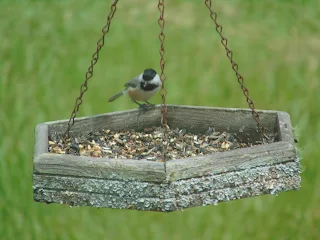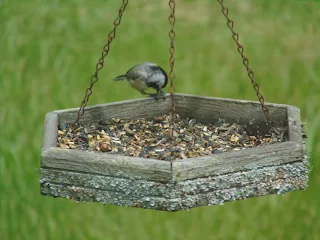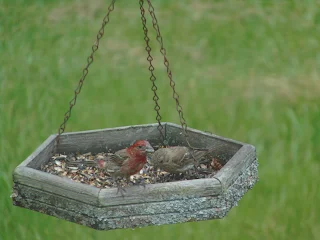Hello bird lovers!
Since the start of the summer months, these lovely Brown Thrashers (Toxostoma rufum) have been seen in my back yard digging through the grass, taking dirt baths in various patches of loose soil, and occasionally actually eating from my feeder. I've counted at least one adult and one juvenile since mid-July.
Brown Thrashers are a part of the family Mimidae, which also includes mockingbirds. They can be found throughout eastern and central North America in the eastern and central United States and southern and central Canada east of the Rocky Mountains.
These lovely birds live year-round in my home state of South Carolina and the rest of the American Deep South. The Brown Thrasher is also the official state bird of the State of Georgia.
Here are some of the photos I've taken since mid-July and early August of the pair that visit my back yard.
Tuesday, August 20, 2024
Brown Thrashers In My Backyard
Monday, August 19, 2024
Thursday, August 15, 2024
Night Sky Photography -- 08-14/15-2024 -- Jupiter & Mars Conjunction With Morning Constellations!
 |
| The conjunction of Jupiter and Mars as seen from my back yard just above the treetops about 85 minutes before sunrise. You can also see the major morning stars of several constellations. |
Since the start of August 2024, both Jupiter and Mars can be seen shining brightly in the eastern morning sky, moving ever closer to each other in their respective orbits around the Sun. I've been following its progress when clear skies permitted.
On the morning of Wednesday, August 14th, the two planets finally reached conjunction, appearing very close to each other -- less than a full moon’s width apart on the morning sky. Mars passed just over the top of Jupiter and will continue to appear to be close to the gas giant planet for at least one more early morning on Thursday, August 15th before the two planets move farther away from each other.
The following are the photos I took early this morning of the conjunction.
In my cover photo for this post above taken about 85 minutes before sunrise, y'all can see the two planets together in the early morning sky as I saw them from the vantage point in my back yard seeing them rising just above the tops of the tree line; along with some of the brightest stars of the morning constellations.
Both Jupiter and Mars can be see together just inside the Constellation Taurus The Bull near the bright red-giant star, Aldebaran -- the Eye of the Bull.
In my next photo, I labeled the two planets positions, along with all the nearby bright stars and the Hyades and Pleiades Star Clusters, and Orion's Belt asterism. I also included the approximate location of the distant planet Uranus near the Pleiades. This was taken about 75 minutes before sunrise.
The next morning on Thursday, August 15th, I took two more photos of the conjunction and the morning stars, this time capturing both of the Gemini Twin stars just above the trees. Y'all can see now that Mars has begun moving past Jupiter and closer towards the east and sunrise. The close up shot of the plants now shows all four of the Galilean Moons now visible -- Io is just barely visible coming from just behind the gas giant planet.
While Mars appears close to the giant planet from our vantage point here on Earth, in reality the two planets are separated by a mean distance of around 342 million miles (or, about 550 million kilometers, or around 3.7 AUs give or take). Still, it makes a very impressive sight in the morning sky.
Well, once again I hope y'all enjoyed my photos of the conjunction. To all my fellow amateur stargazers out there: be sure to keep your eyes to the evening skies, y'all hear.
Monday, August 12, 2024
Summer Birds In My Feeder
Well, its August in my corner of South Carolina once again.
Over the last few days I've been able to capture some really beautiful shots of the summer birds in North America stopping in my back yard to feast in my bird feeder. These beautiful feathered visitors include: Sparrows, Chickadees, House Finches, Cardinals, and the occasional Brown Thrasher.














































































